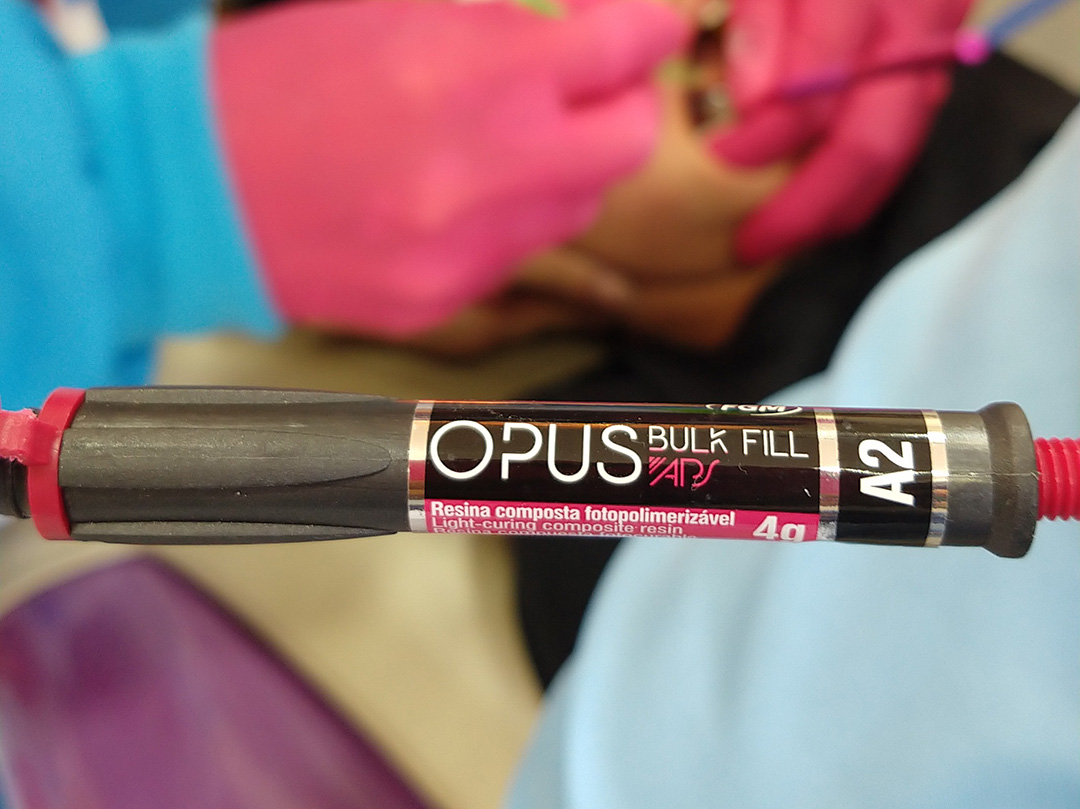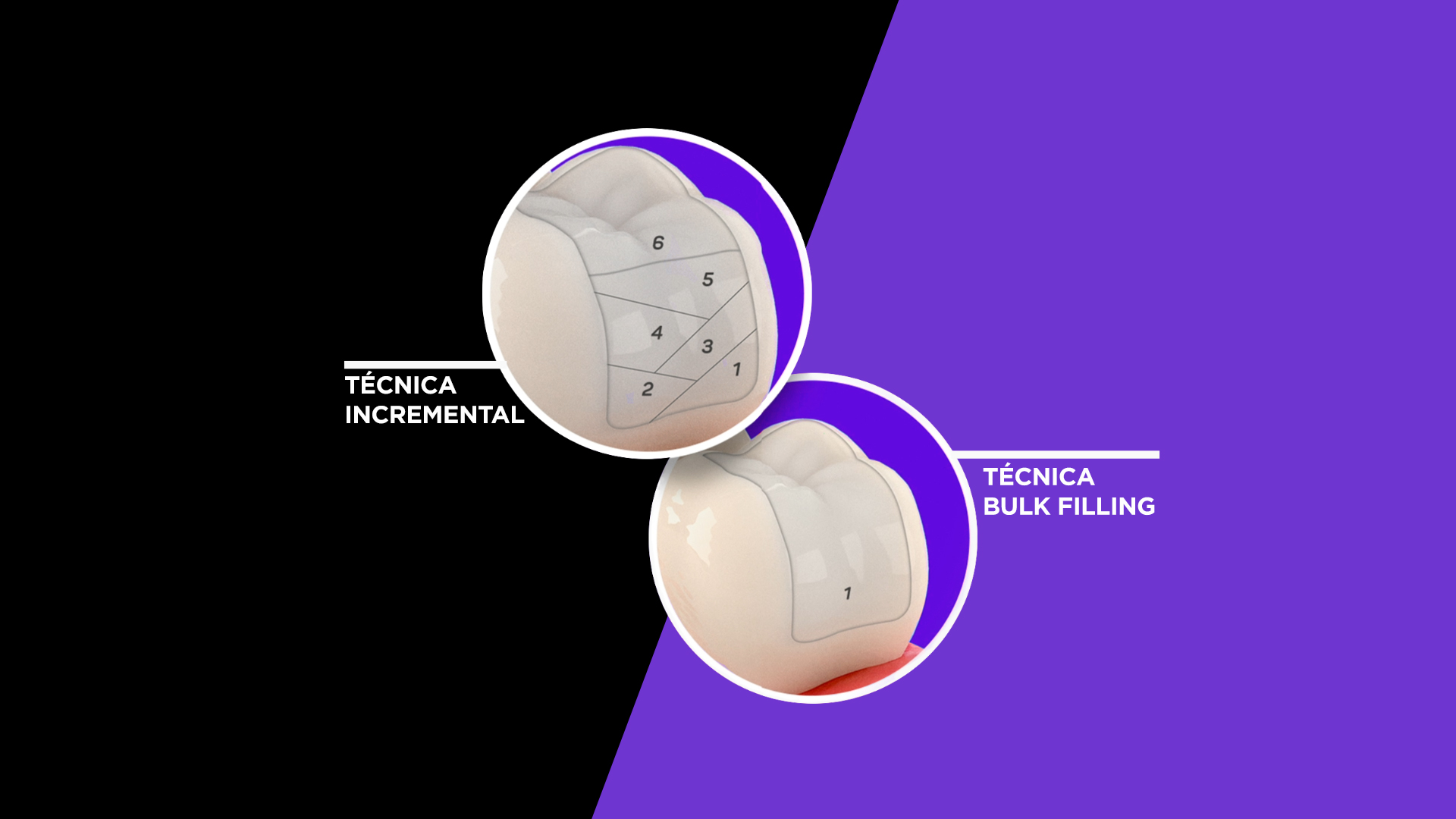Author: Rodrigo S. Reis
About the incremental technique
Traditional restorative resins still have a limited polymerization depth: about 2 mm on average. To minimize issues and optimize material performance, the incremental technique was developed. However, using small increments of 2 mm alone in the reconstruction of teeth with multi-wall cavities is not enough; it is important that no more than two walls are being restored at the same time, in order to reduce the stress area generated during polymerization for each increment.
The incremental technique in posterior teeth requires more time for its execution – small increments are placed and light-cured close to each other without being interconnected, and they are joined together at the end by a small amount of resin -, which increases the cost factor in terms of chair time between increments, as well as operator and professional fatigue.
We can consider it an additive or subtractive reconstruction technique, in which skilled hands can achieve highly artistic work, not only in terms of shape but also in depth of color fidelity by using resin masses of different opacities and shades.
About Bulk Fill Resins
In the past decade, Bulk Fill resins emerged, initially in a flowable consistency, with a polymerization depth of 4 to 5 mm and low stress due to reduced polymerization shrinkage compared to traditional bulk and flowable resins.
With this development, a resin base in dentin could be created quickly and securely, filling with low risk of bubbles or adaptation failures, leaving the final 2 mm for an incremental technique using a traditional restorative resin.
This technique was named Bulk & Body: a large amount of resin was injected at once, light-cured, and then a faster incremental technique was performed, usually with a body resin, for instance.
This approach led to significant gains in productivity, adaptation, and marginal sealing in class II cavities, as well as reducing the deleterious effects of polymerization shrinkage and enabling esthetic characterization of the surface layers.
A few years later, bulk-fill resin composites in bulk or restorative form were introduced, advocating for the placement of increments of 4 to 5 mm, compacted into the cavity. After filling through a subtractive or additive process, the desired anatomy is achieved.
The clinical time saved was even greater. Thus, there is greater profitability for the professional – even though Bulk Fill materials may cost slightly more than their traditional counterparts.
Some issues need to be addressed, such as the greater translucency of Bulk Fill materials (to allow light transmission), which can result in slight graying. This is not critical in most everyday cases, but in conditions of darkened dentin, the gray aspect might be more pronounced. To avoid this, the prior use of an opacifying resin and a highly chromatic dentin might be necessary.
Another consideration is that a single bulk-fill resin restoration can lead to minor internal adaptation flaws, especially in class II cavities. Additionally, the increased translucency of the material shortens the working time in a well-lit operating field, which is crucial in a subtractive sculpting technique.

Indications for Each Technique
Therefore, as everything has advantages and disadvantages, we can achieve the best of both worlds through the combination of techniques.
Examples:
- Opus Bulk Fill APS resins offer a longer working time under well-lit operating conditions than other materials, thanks to FGM’s exclusive APS (Advanced Polymerization System) technology. Advantage: obtaining margins with less excess material.
- In premolars and areas where maximum posterior esthetics is required, techniques like Bulk Flow (Opus Bulk Fill Flow APS) can be used for the base, and conventional resins (such as Vittra APS or Opallis) can be used for incremental completion. Advantages: time-saving and natural esthetics.
- Upper molars and lower molars in class I with bulk-restorative technique. Advantages: simple, super-fast, and acceptable esthetics for the vast majority of patients.
- Class II molars using the Bulk & Bulk technique, where a base of Bulk Flow can be injected and light-cured, followed by rapid cavity filling with a bulk-restorative resin. Advantages: speed and improved sealing.
Conclusion
In conclusion, we can see that one technique does not compete with the other, but rather they can often complement each other and serve as options depending on a specific situation or patient profile.
Furthermore, every resin, regardless of its type, requires careful adhesive protocols and proper light curing.























